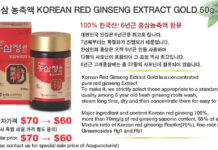
Cang Zhu is the Activator, Bai Zhu is the Nurturer
By Winston Lee L.Ac., Ph.D., KMD
As a doctor of acupuncture and herbal medicine, I’ve come to believe that the best prescriptions don’t come from theory alone but from continuous practice, trial and error, and careful observation of how patients respond.
Among the many herbs I’ve worked with over the years, two stand out regarding digestion and energy: Cang Zhu and Bai Zhu. Though their names may sound similar, their effects and roles in formulas are quite different. Learning how and when to use them correctly can significantly impact your clinical results.
Cang Zhu is often used in formulas to stimulate the digestive tract. It promotes movement in the gastrointestinal system and helps the body process food when symptoms like stagnation or bloating are found. It’s warm and dry in nature, pushing the body to move. This is why it’s commonly used in formulas like Ping Wei San or Hyang Sa Ping Wei San, especially for patients who complain, “I feel hungry, but I can’t digest well” or “My stomach always feels full and uncomfortable.” In those cases, Cang Zhu helps move things along and reduces the feeling of being stuck in the belly. But there’s a catch. If overused, Cang Zhu can easily exhaust a person’s qi. That’s why I often remind students that Cang Zhu is like a father in the digestive family – strong, active, and pushy. It gets things going but can also wear people out if it’s not balanced properly.
That’s where Bai Zhu comes in. While Cang Zhu is the activator, Bai Zhu is the nurturer. It strengthens the spleen and supports digestion but in a more gentle and tonifying way. Bai Zhu is excellent for patients with weak digestive systems, especially those who are underweight, easily fatigued, or prone to loose stools. It dries dampness and boosts spleen qi without the overbearing push of Cang Zhu. Think of Bai Zhu as the mother in the digestive family – steady, nourishing, and supportive. It’s a significant component of classic formulas like Si Jun Zi Tang and Shen Zhu Jian Pi Tang, strengthening the digestive system over time.
In some cases, combining the two can be very effective. I had a young male patient in his twenties who was extremely thin and spent most of his days playing indoor games. He had poor digestion, low appetite, and always looked tired. I prescribed a formula that included Cang Zhu and Bai Zhu, along with Chen Pi, Hou Po, and other supporting herbs. After two weeks, his appetite improved, he looked more energetic, and even his family noticed the change. By the second round of herbs, he had stopped complaining of stomach pain and had more vitality than I’d seen before. His primary doctor was so surprised by his improvement that he asked for a copy of the herbal formula.
This case reminded me of one more key point: when using Bai Zhu in large doses, especially in modern formulas where digestion is already weak due to processed food and sedentary lifestyles, you must support its digestibility. Bai Zhu can be hard to digest, especially when paired with fiber-rich herbs like Rehmannia. I almost always include Chen Pi and sometimes Sha Ren or Mu Xiang to help harmonize the stomach and move qi. Chen Pi, in particular, does a great job of helping the digestive system break down and absorb heavier tonic herbs like Bai Zhu.
In conclusion, using Cang Zhu and Bai Zhu wisely means knowing the patient’s energy level, digestive strength, and lifestyle. If the digestive fire is too weak, too much Cang Zhu might drain them further. If the formula lacks movement, too much Bai Zhu can sit heavily in the gut. But when balanced and paired with supporting herbs like Chen Pi, these two roots can transform sluggish, weak digestion into a strong, vital system. It all comes down to harmony. As always, observe, adjust, and never stop learning from the people we treat daily.































